Hillel Hayom 2019

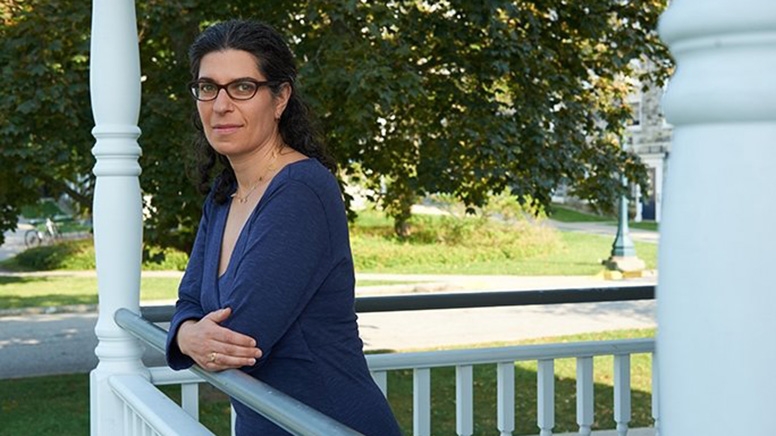
Reflections on the New Year
Jewish pluralism is always on my mind. At large universities, Hillel may have the capacity for three or more prayer minyans that represent different denominations and allow students to immerse themselves in the forms and observances of those movements.
Here at Middlebury, where our numbers are small, we are all trying to make it work together. That applies to different ways that people practice Judaism—from their observance of different laws and traditions to the different approaches that come from being of Sephardi or Ashkenazi origin. It also applies to different relationships to and experiences with Israel as a Jewish state.
Pluralism can be challenging: Should High Holiday and Shabbat services lean toward Reform or Conservative approaches? What about cultural Jews? How do we have a conversation, not a debate, about Israel? How strictly kosher do we make the kitchen for Passover?
None of these are easy questions, and yet we seek them out, and I am grateful for them. What an opportunity for students to learn from each other about their friends’ varying approaches to Jewish practice and expression! Indeed, Judaism is so rich because it is so varied, and in pluralistic settings we are the recipients of all this richness.
At Middlebury Hillel, our approach to these potential differences is education and dialogue. We create opportunities to learn about many aspects of Israel, and to learn about how to discuss our passionate political views. With education about different approaches to ritual and prayer, students from all backgrounds see that there is more than one way to be Jewish.
Practicing pluralism stretches the tent flaps of our already big tent, opening it wide in all directions. While we strive to have a community that supports its members in their Jewish identities, this does not mean erasing difference in the process. Instead, these differences provide the texture, richness, and learning that draw us in.
May this new year bring new opportunities for us to share and learn from our differences!
L’shanah tovah,
Rabbi Danielle
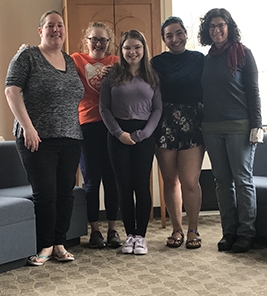
The Art of Liturgy
Sitting in a circle of blue couches in the Jewish Center on Friday evening, the students come together to light candles, sing, and share highlights from their week. Offering a mix of traditional Hebrew prayers and melodies, English translation, and poetry, student prayer leaders create a welcoming space for their peers to mark the end of another intense academic week.
It may look easy, but creating this kind of atmosphere takes skill. The leaders are constantly weighing competing factors. How do you help people from different backgrounds all feel comfortable in the prayer space? What is the balance of Hebrew and English? How much should the prayer leader assume the congregation knows? Is the group ready to learn a new melody?
In order for our student prayer leaders to build the skill and capacity to address these questions, we piloted an exciting new program this past year called the Jewish Liturgy Fellowship. With the support of Aaron Mendelsohn ’95, our longtime High Holiday cantor, and his extended family, we created an opportunity for four students to delve deeply into the art of leading Jewish prayer services.
These four students committed to attending workshops co-taught by Rabbi Danielle Stillman and Sarit Katzew, education and program director at Middlebury’s Havurah of Addison County. Students learned the history and meaning of the Friday night liturgy and Havdalah, as well as how to weave the meaning of a prayer into the service. They delved into the finer points of service leading—including timing, rhythm, leading songs, and teaching new tunes—work-shopped these techniques, and discussed the challenges and dynamics of leading in a pluralistic Jewish setting.
The work paid off! Liturgy Fellow Abby Browngoehl ’19 noted, “When I was unsure how to explain the prayers on a Friday evening, I had a nagging feeling that I was providing a surface-level experience to our community and that I could do better… . At each of our meetings, I had epiphany moments where I learned something I had never understood before.”
The new academic year will welcome a new group of fellows to inspire more students to explore their relationship to Jewish prayer.
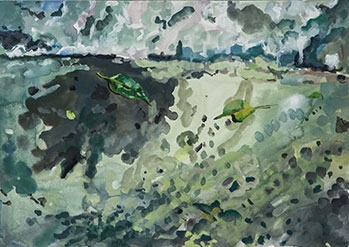
On the Cover
This is one painting of two that Middlebury Hillel was able to purchase for the Jewish Center space on campus, thanks to a generous grant from Hillel International. The painting is gouache on paper and is part of a series of 16 paintings that the artist says “describe a meditative walk with the head down in Tel Aviv.”
Noam Wenkert is an Israeli artist living in Tel Aviv. Born in 1979, she received her MFA from Bezalel Academy of Art and Design, and does painting, painting installations, and participatory painting acts. She also teaches art at several colleges and schools. www.noamwenkert.com
From the Quint Lecture
In 1941, when Simon Dubnov was the age of 81, they did not deport him—he was too frail—but they simply took him out and they shot him. And the story is that as they took him out, he repeated to the Jews who surrounded him, “Jews, write it down.”
That is what Dubnov had done with his life, and in his death, he encouraged Jews in the ghettos to collect their stories so that when the war ended they could share the truth with the rest of the world.
What Dubnov did in that final moment was to provide consolation. Scholarship was not dry as dust. Scholarship reverberated with meaning for the larger Jewish community.
—Ismar Schorsch, chancellor emeritus of the Jewish Theological Seminary, speaking of Jewish historian Simon Dubnov. Schorsch’s lecture, “National Pride and European Prejudice,” was the 2018 Hannah A. Quint Lecture in Jewish Studies.
Translating the Holocaust
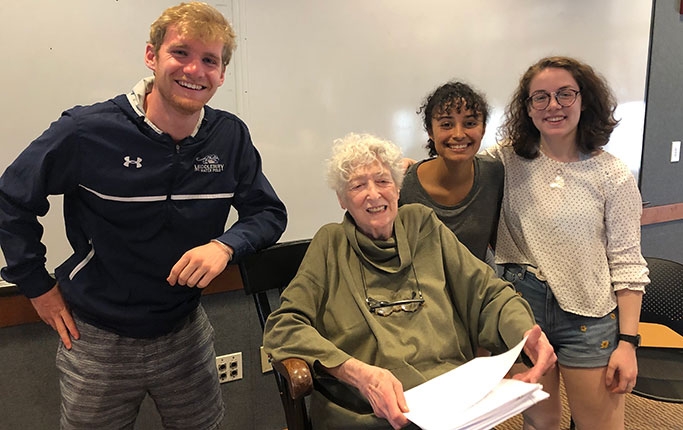
BY KARIN HANTA, PHD, PROFESSOR OF THE PRACTICE, LINGUISTICS AND GENDER, ASEXUALITY, AND FEMINIST STUDIES
Anne Frank would have marked her 90th birthday in 2019, had she lived on and lived well. Her famous diary was the work that the 10 students in my spring 2019 class The Holocaust and Exile in Translation began with, reading translations of her diary in four languages and comparing how she came across, through translation, in different target cultures.
This polyglot class relies on an integrated approach to teaching translation studies scholarship and practice in conjunction with Holocaust and exile history and gender studies. Students learn how to apply their advanced language skills in the field of translation and have ample opportunities for experiential learning.
They also learn to appreciate translation as an intellectual activity shaped not only by linguistics but also by cultural and sociological factors and power dynamics. In this class, I especially emphasized testimonials by female and child survivors and LGBTQ victims and survivors. In special collaborative sessions with translation and interpretation faculty at Monterey, we analyzed narrative construction, the role of interpreters during the Nuremberg trials, localization management of specialized terminology, and subtitling techniques.
We had particularly meaningful encounters with Klara Calitri and Lore Segal, two women who were around Anne Frank’s age when they escaped from their native Austria. Calitri, a Vermont artist, fled from Vienna to New York with her parents in 1939 as a 16-year-old, became a teacher, and, upon retirement, followed her artistic passions. Now 97 years old, Calitri volunteered her time to be interviewed by the class. The budding translators who worked on translating subtitles for a segment of the interview found that her story left an indelible imprint on them.
Segal, a Pulitzer Prize nominee and Guggenheim Fellow, came to campus for a mini-residency in the week leading up to Yom Hashoah. A professor at the Bread Loaf Writers’ Conference in the 1970s and 1980s, Segal gained international recognition with her autobiographical novel Other People’s Houses. Students translated a passage from the work and had the opportunity to talk to Segal during her class visits and over dinner after the screening of the Kindertransport documentary Into the Arms of Strangers.
The class culminated in the students’ final project—an exhibition in the Davis Library titled Anne Frank and Her Contemporaries in Translation: A Feminist Memory Project. In addition to giving audiences an introduction to Lore Segaland Klara Calitri’s lives and work, the students also exhibited their translations and a video with the subtitled interview segments. The exhibition focused on two other survivors as well: Ruth Klüger, professor emerita of German at UC Santa Barbara, and Liselotte Marshall, a writer. Klüger described her ordeal surviving Auschwitz as a 13-year-old in her work Still Alive, from which the students translated a passage. Marshall survived World War II as a child in a Swiss sanatorium where she received treatment for bone tuberculosis. Students translated a passage from her autobiographical novel, Tongue-Tied, and also created a Wikipedia page for the author and translated it into various languages, creating a permanent record in the field of Holocaust and exile history.
Among the visitors who attended the opening of their exhibition were Calitri; former Vermont governor Ambassador Madeleine Kunin, who survived the war in Switzerland; Dr. Jack Mayer, author of Life in a Jar: The Irena Sendler Project; and Carey Kaplan, professor emerita of gender studies at Saint Michael’s College. Students guided the visitors through the exhibition and shared what they had learned with their guests. All these activities highlighted that language—and translation—is a potent medium of remembrance.
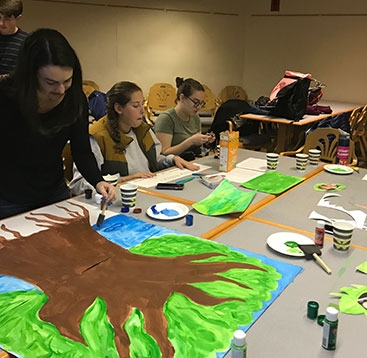
Light in the Darkness
When the news of last October’s shooting at the Pittsburgh synagogue broke, our Hillel board decided to hold a Havdalah service that night and say the Mourner’s Kaddish. We reached out to the Jewish community in Middlebury, and around 20 people showed up that evening to light candles and sing and cry together.
But one vigil did not feel like enough in the face of what had happened. Not only were we mourning the loss of 11 precious lives, but also we were being forced to reckon with what it meant to feel afraid in our sacred spaces of worship and study. We also needed to figure out how to make our Jewish Center—so often a space of laughter and cooking and spirited debate—into a space for grieving.
So we organized an afternoon of art to help students process their feelings about the attack. We painted a tree of life and wrote prayers on it. We painted a candle for each victim. We hung our art in the library as part of an interactive display, and for a week words of love, support, and sadness overtook the bulletin board. Hanging over the display, in English and Hebrew, we wrote out the words “May their memories be a blessing.”
Our grief was not enough. We also needed to show our strength, and that we were not afraid to be Jewish. On Friday, we opened our doors for a solidarity Shabbat, inviting the wider community to participate in our rituals. The Jewish Center overflowed with new faces as students, faculty, staff, and community members showed up to lend us their support. We taught them about our customs. We prayed and we said Kiddush and we broke challah, and even though we were still shaken, our space was full of light.
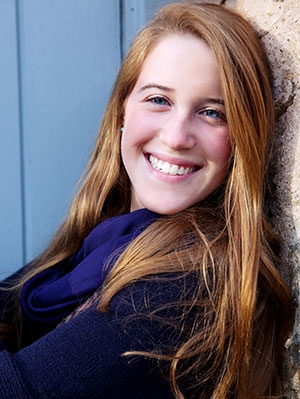
Asked and Answered
AN INTERVIEW WITH ALEX FREEDMAN ‘18
A little over a year ago, Alex Freedman ’18 moved to Israel to become a lacrosse coach. What does such an unusual postgraduation choice look like? Lacrosse is not as common a game in Israel as it is in the U.S.
What led you to make this move?
I’ve been involved with the Israel Lacrosse Association since high school, so I took this opportunity to commit myself to growing the sport full time. I split my time between the southern Israeli cities of Beer Sheva and Ashkelon. It’s very different coaching lacrosse in Israel than in America. In Israel, we recruit mainly from periphery areas where families do not necessarily have the means to support a career in lacrosse. These players are hard-working, dedicated, and passionate for the sport despite the general lack of field space and proper equipment, and varying degrees of domestic competition.
What’s been your favorite part of your job there, and of living in Israel in general?
It’s been seeing the short-term growth of my players throughout the past year and long-term growth throughout the past few years. Some of the players I coach I have been working with for a long time. Some were even my teammates this past summer at the European Lacrosse Championships!
What has been most challenging?
The most challenging part of coaching in Israel is the cultural differences. Sometimes, my players won’t come to practice because it’s raining, or because it’s too hot, or they have something else going on. This can be frustrating, because I come from a background where there were no excuses when it came to practice. Instilling a sense of pride and responsibility does not happen overnight. Every day, I dedicate myself to setting the groundwork for the future where the kids do not take lacrosse lightly. Similarly, the most difficult part about living in Israel is the cultural differences. Many times, I speak Hebrew and people respond in English because of my accent. As tough as the daily challenges may be, it’s all worth it when I see my players accomplish their goals.
How do you think Middlebury prepared you for the experience of living and working abroad?
Middlebury definitely prepared me well, especially with my semester abroad at the Middlebury School at Ben Gurion University of the Negev. The language immersion was so strong that sometimes my Hebrew grammar is even better than that of my Israeli players. Additionally, my experiences with interfaith programming at Middlebury and my job at the Scott Center gave me a passion for interfaith work. I’ve pursued that here by starting a lacrosse program at a school in Hura, a Bedouin village outside of Beer Sheva.
Israel can be a tense topic on college campuses. What would you tell American college students about Israel?
I recommend traveling to Israel, if you are able, and speaking with as many people as possible to form your own opinions about Israel. I am an Israeli citizen, I have participated in elections, and I support the people of Israel with all of my being. But that is not to say that I agree wholeheartedly with or support all the decisions that the government makes. I am often outspoken regarding my disagreements with government policy decisions and actions. My opinion is shaped largely by my own personal experiences in Israel, which have included amazing religious and spiritual experiences, but also having 30 seconds to run to a bomb shelter. In the Jewish community at Middlebury, we came from different backgrounds, and used being Jewish as a commonality to engage in respectful debate and conversation about Israel.
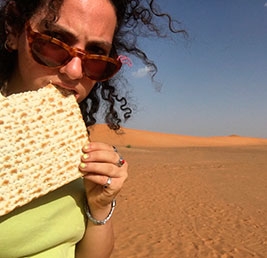
Hillel Students Abroad
Cara Levine ’20, France and Morocco
I spent fall 2018 in Paris, France. I was able to find a “libérale” synagogue to attend for the High Holidays. The synagogue was lovely, but French Jews are guarded. I spent 40 minutes waiting outside on Rosh Hashanah while police investigated something near the synagogue. I was pretty freaked out because I couldn’t fully understand and because I had been warned about anti-Semitism in France. I was invited to a public Hanukkah lighting by the Eiffel Tower for the first night of Hanukkah, but I was too wary to go to such a public event. I spent spring 2019 in Rabat, Morocco. The Jewish community in Morocco has become tiny. I went to services nearly every week in Rabat and a Jewish friend would accompany me, but we were almost always alone in the women’s section, and the men’s section was small, too. I did attend several Shabbat meals. Moroccan Jews are the opposite of French ones, and I was always invited to someone’s house for dinner. In the old Jewish part of the city where only three Jews remain, I was spoken to in a mixture of French, Arabic, and Hebrew. In Souissi—the fanciest part of Rabat—I was spoken to in French and English. There were tensions around the survival of this community of aging Jews, many of whom spend at least part of the year in Israel or France.
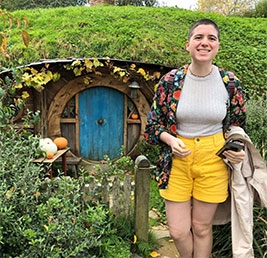
Mikayla Hyman ‘20, Australia
This past spring, I spent my time hiking in rainforests and snorkeling in Australian coral reefs with 18 other American students. Of my group, half self-identified as Jewish, and half self-identified as vegetarian, sheltering me in the most homogeneous environment I have ever encountered! Though my program was filled with Jews, my homestay family was devoutly Christian, and it was wonderful to learn about their relationship with religion and attend a service at their church. When it was time for our independent study project, and we were scattered to different cities across Australia, it was incredible to have an unconventional Passover seder with two of my friends and my partner. We ate a gorgeous homemade meal, told our favorite family Passover traditions, and ruminated over the Jews’ escape from Egypt.
Immersive Reading
This past spring, in anticipation of a campus visit from author Moriel Rothman-Zecher ’11, a group of Hillel students read Rothman-Zecher’s novel Sadness Is a White Bird. The novel, about an Israeli teenager and his friendship with two Palestinians prior to his service in the Israeli army, gives insight into these two separate worlds and how they converge.
When we met to discuss the book, we looked at maps to understand its geopolitical references, read Mahmoud Darwish poems, and examined the complicated cross-cultural relationship between the main characters, Jonathan, Laith, and Nimreen. The group met three times over the semester, which gave us time to ask difficult questions related to Israel and to discuss those questions over an extended period.
Finally, in April, we met Rothman-Zecher in person. He held a lively book reading, arranged by Robert Schine, Curt and Else Silberman Professor of Jewish Studies. We were excited to ask Rothman-Zecher the questions we had been asking each other all semester and hear about how his personal experience had influenced the characters in the novel. We then joined him, and a number of Middlebury faculty (many of who had taught him), for dinner to continue our discussions.

